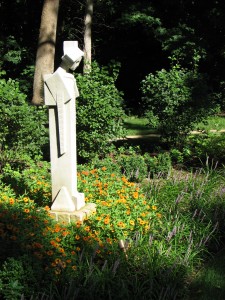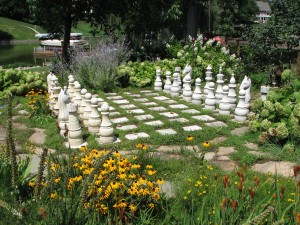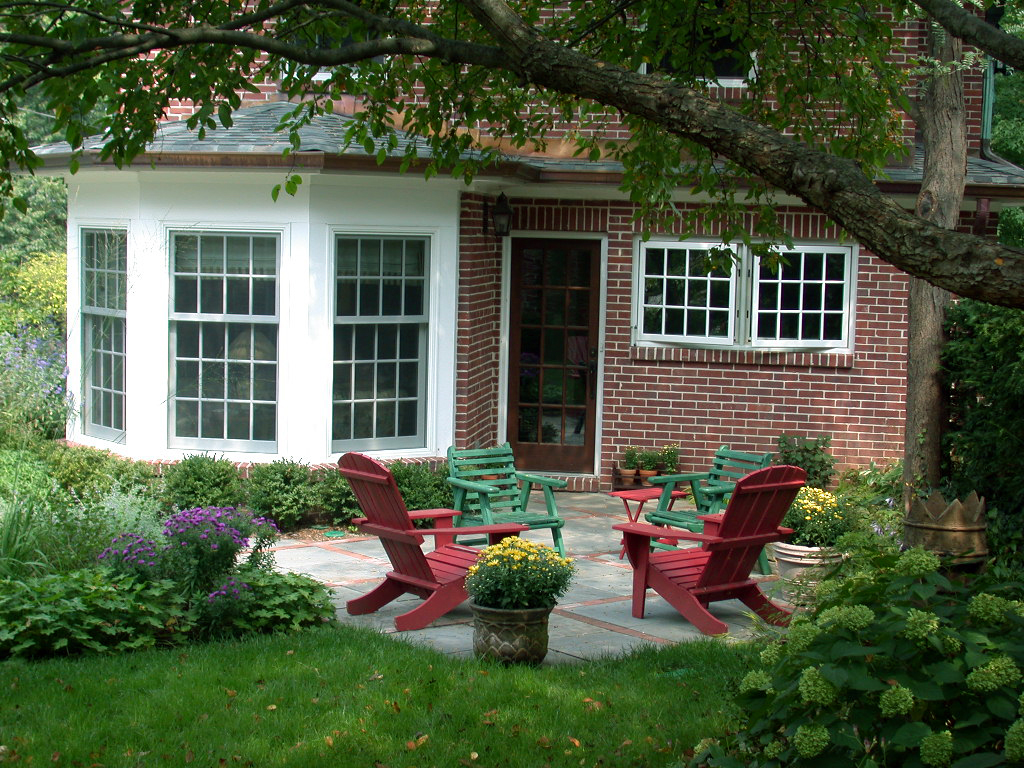Written by Ron Howe
What do you think of when we say small spaces? Maybe you think of a 10 ft. x 10 ft. or 20 ft. x 20 ft. space? Actually the size is irrelevant. It’s just a space that is small in comparison to other spaces you’ve known. You decide you want to make it special and give it the ‘WOW’ factor. So how do you create small spaces with big impact? Utilize these basic design principles: COLOR – ELEMENTS – TEXTURE – SIZE – PLACEMENT – SCALE
COLOR can always make a big impact if used properly. That one spot of color can make all the difference. Think about how you noticed that bright red belt on your best friend’s blue dress or that yellow sports car that really stood out in a super market parking lot. If you have a small space brilliant color can make a big impact. Let’s say you have a small paver patio of a light tan color, you pick out a couple of chairs and a small end table in a warm brown color. You surround the patio on three sides with a low boxwood hedge in a dark green color. Ok, it looks good but, but something’s missing. Here’s where we come in with a blast of COLOR, a beautiful big rust-colored flower pot to sit on the patio with a wonderful planting of vibrant annuals or tropicals billowing over and above the pot. Now that makes a statement.
ELEMENTS often make a difference. Take for instance an angular sculpture. How about adding a great furniture arrangement, a custom designed fence, pergola, or a long curved, low stone wall that could be used for overflow seating. Other important elements could be a hot tub, small water feature, bubbling boulder, a fire boulder, or a fire pit. All of these are interesting elements and, used correctly, can be very dramatic.
TEXTURE is very effective for calling attention to an element. For instance, a fence with rough-sawn cedar boards with a clear, satin finish that brings out the grain of the wood, is very alluring. Add an accent plant, such as the evergreen ‘Gowdy’ Oriental spruce, to add unusual texture to catch the eye.
SIZE is another good tool. Use oversized elements for a powerful impact or undersize for a surprise discovery. Contrast is the key.
 PLACEMENT of that key feature is something that takes careful consideration. Location of elements is very critical. Elements must work together and be harmonious and complementary.
PLACEMENT of that key feature is something that takes careful consideration. Location of elements is very critical. Elements must work together and be harmonious and complementary.
SCALE is left for last because it is probably the most important. Scale goes along with size, but, they are two different things. If most components are in scale with each other and look good, adding something of a totally different size can give you a ‘WOW’ factor.
The fun part is blending all of these design principles together to create a beautiful harmonious space that makes a statement that is alluring. Success is measured by the amount of time you spend there.


